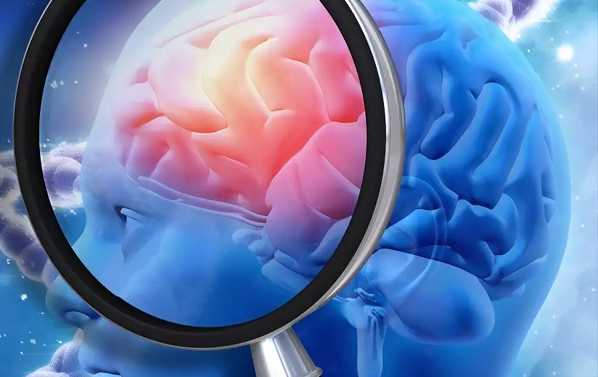Vaccination and Drugs
Chronic Inflammation in Alzheimer’s Disease
AN ARTICLE PUBLISHED BY KATE RAINES AND THE NATIONAL VACCINE INFORMATION CENTER.
As medical researchers continue to make progress in understanding the causes and mechanisms behind Alzheimer’s disease (AD), it appears that AD may be another example of an autoimmune disease, in which the body’s own immune system turns on itself in a case of mistaken identity.[1]
One of the hallmarks of the more than 80 recognized autoimmune disorders is chronic inflammation,[2] [3] although the site of the inflammation depends on the specific disorder.[4] In rheumatoid arthritis, for example, inflammation affects the joints, in Graves’ disease it is the thyroid, in psoriasis or systemic lupus erythematosus (SLE) symptoms show up on the skin. In the case of AD, the inflammation is in the brain, showing up as an overproduction of antibodies generated to neutralize the brain “plaques and tangles” characteristic of the disease.[5]
Classic Signs of Inflammation
The five “cardinal signs” of inflammation are heat (calor; as applied to the body’ extremities), redness (rubor), swelling (tumour), pain (dolor) and loss of function (functio laesa). These simple features are easy to recognize based solely on observation and experience. The body’s initial response to a perceived injury or infection is to increase blood flow to the area, causing inflammation. The heat and redness are byproducts of the increased volume of blood and erythrocytes (red blood cells) passing through the dilated vessels.[6]
The dilated vessels are also more permeable than usual and the swelling, or edema, results from fluids passing through and infusing the injured tissue. The pain may be a result of the original injury or from the inflammatory process itself, as the swelling puts pressure on the sensory nerves.[6]
Complex Interplay of Factors in Inflammation
More complete characterization of the processes involved in inflammation are much more complex, involving a complicated interplay among specific immune system components—such as macrophages, B cells, T cells, mast cells and others—as well as extracellular regulators and mediators like cytokines.
The process, however, can be likened to a well-trained army: An organism or injury (the enemy) damages a healthy cell, which responds by sending a chemical “SOS” signal. The first responders are the local tissue histiocytes, or macrophages, which then release other chemicals that dilate the blood vessels, relaxing the junctions between the epithelial cells lining the blood vessel walls, and allowing fighter cells specific to the type of infection to get to the “battle area.” The enemy microbes are either “eaten up” (phagocytosis) or injected with toxic chemicals (cytotoxicity) to kill them. Other immune system responders repair the damage after the fighter cells leave.[7] [8]
Specialized Immune Response of the CNS
The inflammation involved in brain disorders runs along similar lines but is distinct and separate from the processes at play in the rest of the body, with “special forces” that are specific to brain chemistry. Similar to the macrophages responsible for recognizing and eliminating threats in the rest of the body, microglia in the dedicated immune system of the central nervous system (CNS) remain vigilant but in a resting state until they are activated by a perceived threat.[9]
The plaques of AD are recognized as such a threat and attacked. But, unlike other types of infection, the plaques are constantly replenished and the resulting chronic activation of the defense system (inflammation) may lead to damage of healthy brain cells and acceleration of the AD processes.[9]
The immune response of the CNS does not, however, exist in a vacuum, as there are routes of communication between the brain and the immune system of the rest of the body.[10] For that reason, many conditions that create chronic inflammation in the peripheral system also may trigger an inflammatory reaction in the CNS, and the brain. Many of the avoidable risk factors for AD, including smoking, depression, hypertension, diabetes mellitus and obesity, are associated with systemic inflammation.[11]
Role of Inflammation in AD
As scientists continue to unravel the underlying causes and triggers of AD, the actual role played by inflammation is still being debated. There is general agreement that the vulnerable AD brain exhibits both signs of inflammation and stimuli for inflammation, in the form of the classic plaques and tangles characteristic of the disease, yet whether the inflammation is causing, promoting or worsening the damage… or working to remove the accumulated damage resulting from a different disease process remains somewhat in question.[12]
Evidence that activation of microglia has a negative effect on normal cognitive function supports an active role of inflammation in the processes promoting AD, and one hypothesis suggests that inflammation in the brain acts “by increasing the production of amyloid, killing healthy neurons, and ultimately reducing microglial cells’ ability to remove amyloid plaques.”[13]
Inflammatory Conditions Associated With AD
Both animal studies of induced brain inflammation and human studies of patients with severe head injury have shown that brain inflammation may lead to AD-like changes. Head trauma is for that reason considered a risk for later development of AD.[14[ [15]
Yet chronic inflammation of the peripheral system also may lead to brain inflammation and AD. Long-term gum disease, characterized by chronic inflammation, has been linked to an increased risk of developing AD.[16] A study of people with a history of at least 10 years of gum inflammation showed a 70 percent greater incidence of AD compared to those with healthy gums.[17]
Vaccines and Brain Inflammation
Vaccination stimulates an immune response to produce inflammation and the production of antibodies in an effort to create artificial immunity to infectious microbes. Vaccines have long been known to cause brain inflammation starting with the first vaccine for smallpox and post vaccinal encephalitis is a central nervous system disorder characterized by multifocal inflammatory and demyelinating lesions in the brain.[18]
Under the National Childhood Vaccine Injury Act of 1986, the federal vaccine injury compensation program (VICP) has compensated children and adults for brain inflammation (encephalitis, encephalopathy) that leads to permanent brain dysfunction following receipt of a number of current government recommended and mandated vaccines, including influenza, MMR and pertussis vaccines (DPT/DTaP/Tdap).[19]
Vaccine researchers have described a number of biological mechanisms whereby vaccines can cause brain inflammation. The Merck Manual states that encephalitis can develop after “A virus or vaccine triggers a reaction that makes the immune system attack brain tissue (an autoimmune reaction).”[20]
Vaccine ingredients like aluminum adjuvants, which are neurotoxic, have been implicated in vaccine-associated brain dysfunction.[21]
Commenting on the ability of vaccines to cause chronic brain inflammation when given repeatedly with little time between vaccinations, Russell Blaylock, MD said “Overstimulation of the systemic immune system, as by repeated inoculations spaced close together, can result in chronic activation of brain microglia, the nervous system’s immune mechanism.”[22]
References:
[1] Schmid J. Is Alzheimer’s an Autoimmune Disease? Best Alzheimer’s Products Jan. 29, 2015.
[2] A to Z List of Autoimmune Diseases.
[3] Poehlmann KM. Inflammation and Chronic Fatigue: Twin Hallmarks of Autoimmune Disease. NTA Conference March 2013.
[4] NIH. Understanding Autoimmune Diseases. National Institute of Arthritis and Musculoskeletal and Skin Diseases March 2016
[5] Schmid J. Is Alzheimer’s an Autoimmune Disease? Best Alzheimer’s Products Jan. 29, 2015.
[6] Punchard NA. (Introduction to) The Journal of Inflammation. J Inflamm (London) September 2004.
[7] Janeway CA Jr, et al. The Front Line of Host Defense. Immunobiology: The Immune System in Health and Disease, 5th edition, New York, Garland Science 2001.
[8] Amr AA. Understand the Process of Inflammation. Wonder How To: Medical Diagnosis and Procedures Mar. 22, 2011.
[9] Ellison JM. A New Angle on Alzheimer’s Disease: The Inflammation Connection. Swank Memory Care Center, Christiana Care Health System Jan. 3, 2017.
[10] Teixeira FB, et al. Periodontitis and Alzheimer’s Disease: A Possible Comorbidity between Oral Chronic Inflammatory Condition and Neuroinflammation. Front. Aging Neurosci. Oct. 10, 2017.
[12] Neuroinflammation Working Group. Inflammation and Alzheimer’s Disease. NCBIJan. 9, 2014.
[15] Schnabel J. A New Look at Brain Inflammation in Alzheimer’s. The Dana Foundation Jan. 16, 2013.
[16] Gum Disease Linked to Increased Risk of Alzheimer’s Disease. Pub Med Health Aug. 22, 2017.
[17] Boggs W. Long-Term Gum Disease Linked to Alzheimer’s Disease. Reuters Health News Aug. 17, 2017.
[18] Miravelle a, Roos KL. Encephalitis Complicating Smallpox Vaccination. Arch Neurology 2003; 60(7): 925-928.
[19] HRSA. Data & Statistics: National Vaccine Injury Compensation Program. November 2017.
[20] Greenless JE. Encephalitis. Merck Manual Consumers Version 2017.
[21] Parpia R, Fisher BL. Aluminum in Antiperspirants Linked to Cancer and to Brain Damage from Vaccines. The Vaccine Reaction Nov. 14, 2017.
[22] Blaylock RL. Chronic Microglial Activation and Excitotoxicity Secondary to Excessesive Immune Stimulation: Possible Factors in Gulf War Syndrome and Autism.











